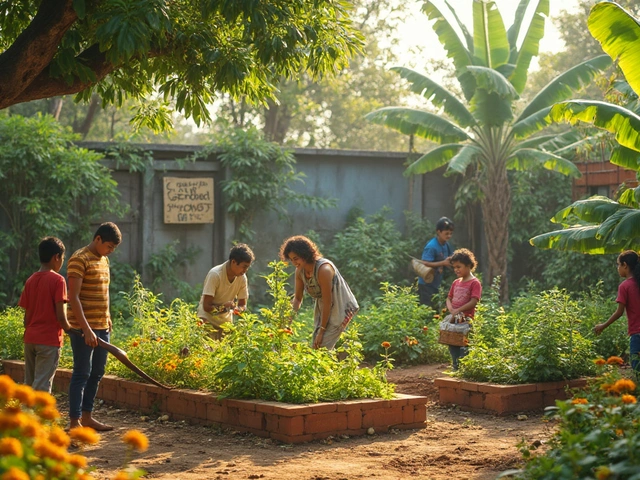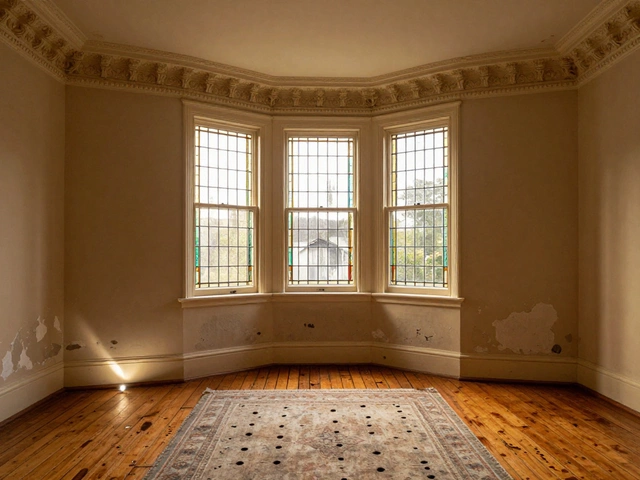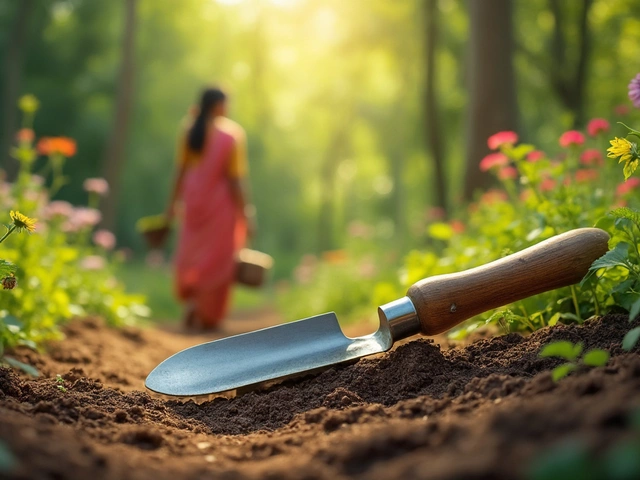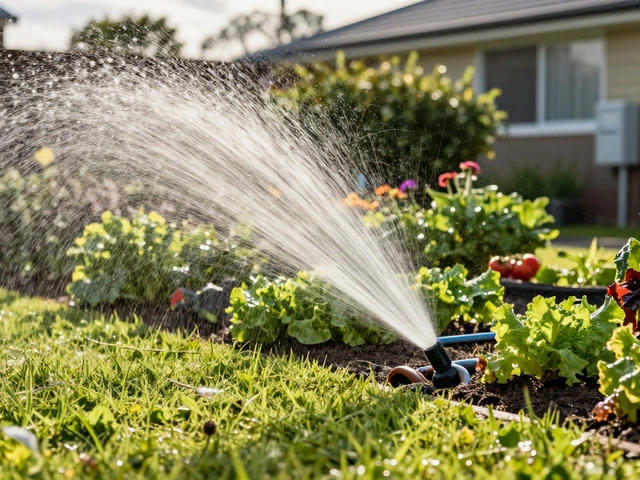Large Yard Gardening Tips: Make the Most of Your Space
Got a big yard and wondering where to start? You don’t need a professional designer to turn that open area into a thriving garden. A few simple steps can give you more shade, better soil, and a space that feels lively all year.
Plan Your Layout Wisely
First, sketch a quick map on paper. Mark where the sun hits hardest and where shade already exists. Group sun‑loving plants like tomatoes, marigolds, and bhindi on the bright side, and keep shade‑tolerant veggies such as spinach and mint under trees or pergolas. Using zones helps you water only the parts that need it, saving time and water.
Next, think about pathways. A wide, stepped path made of locally sourced bricks or gravel lets you move around without compacting the soil. Keep the path at least 60 cm wide for easy access with a wheelbarrow. If you have kids, add a tiny play corner with soft grass or sand – it keeps them busy while you tend the rest.
Smart Water and Soil Management
Large yards can waste a lot of water if you’re not careful. Install drip irrigation or a simple soaker hose along your rows. Bury the drip lines about 5 cm deep; this protects them from sun and animals and delivers water right to the roots. You’ll notice healthier plants and a lower water bill.
Soil health is the backbone of any garden. Spread a 2‑inch layer of compost over the whole area before planting. Compost improves drainage, adds nutrients, and reduces soil compaction. For heavy clay spots, mix in coarse sand or perlite. After the first season, test the soil pH; most Indian garden veggies thrive at pH 6.0‑6.5.
Mulching is a game‑changer for large yards. Spread a thick blanket of dry leaves, straw, or coconut husk around each plant. Mulch locks in moisture, suppresses weeds, and slowly breaks down into organic matter. A 3‑inch layer works well and looks tidy.
If you love fresh herbs, plant them in raised beds or containers. Raised beds let you control soil mix, keep drainage consistent, and reduce the back‑bending you’d otherwise do. Herbs like coriander, mint, and basil grow fast, and you can harvest them daily.
Don’t forget the wildlife. Plant native grasses and flowering shrubs like bougainvillea or neem. These attract bees, butterflies, and birds that help with pollination and pest control. A simple bird feeder or a small water feature adds interest and encourages beneficial creatures.
Maintenance doesn’t have to be a chore. Set a weekly schedule: check drip lines, pull weeds, and inspect plant health. Use a garden journal to note which plants performed best in each zone – this info guides future planting decisions.
Finally, enjoy the space. Set up a cozy seating area with simple benches or a hammock. Light the walkways with solar lights for evening walks. A comfortable spot invites you to spend time outdoors, and that’s the real reward of a well‑planned large yard.
Make a Large Yard Feel Cozy: Terrace Gardening Tips That Work
A big yard can sometimes feel empty or cold, but you can turn it into a warm and inviting spot with smart terrace gardening tricks. Learn how to break up the space, add color, and use outdoor furniture to create comfort. The right plants can make your garden feel like a natural living room. This article dives into simple ways to add personality and charm, making your large yard a place where everyone wants to hang out. Perfect for families looking to get more out of their outdoor space.
About
Terrace Gardening
Latest Posts


Self-Sustaining Garden: How to Start One the Easy Way
By Alden Thorne Jun 18, 2025

What to Look for When Buying a Victorian Terrace
By Alden Thorne Dec 16, 2025

Discover the Most Crucial Gardening Tool for Success
By Alden Thorne Apr 14, 2025

